Small Dog Breeds That Shine in Online Dog Training and Socialization
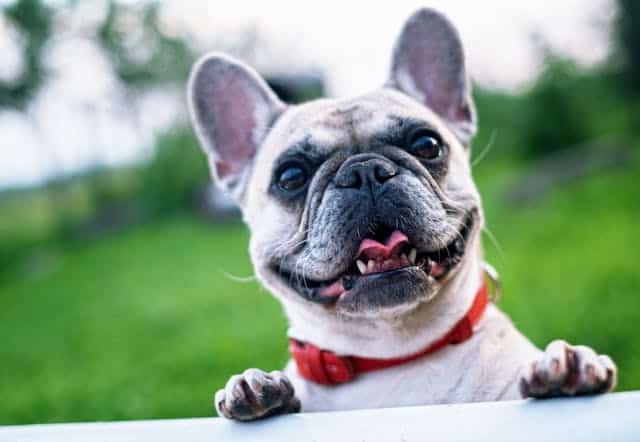
Small Dog Breeds That Shine in Online Dog Training and Socialization. Small dog breeds bring big personalities into our homes. Their energy, intelligence, and charm make them perfect companions for people living in all kinds of spaces (See lowest price).
These same qualities also mean that with the right approach, they can make fast progress in dog obedience training and socialization, even when working with online dog training tools.
I’ve seen this firsthand with Savannah, my small dog who thrives with online lessons. Training sessions have helped Savannah shine, from improving basic manners to building confidence around new people and pets.
Whether you’re curious about how small dog breeds learn best or you want straightforward tips for dog trainig, you’ll find practical advice here to help your dog succeed.
We’ll look at the most lovable small breeds known for their smarts, how online dog training supports both obedience and healthy habits, and how resources like recent dog food reviews factor into successful training. With the right training and the best nutrition, your dog can thrive just like Savannah.
Table of Contents
Key Takeaways
Understanding how small dog breeds thrive in online dog training and socialization comes down to a few clear points. Savannah, my little companion, has been proof that small size doesn’t mean small results. Training is always more rewarding when you keep these essentials in mind.
Small Breeds Respond Well to Online Dog Training
Small dogs like Savannah quickly adapt to virtual learning environments. Their natural curiosity and eagerness to please make online dog training especially effective. Training at home allows them to feel comfortable and safe, which leads to faster progress.
Some key reasons small breeds do well in online settings include:
- They’re attentive: Smaller dogs watch and listen closely, catching details you might miss with larger breeds.
- They thrive on positive feedback: Encouragement and rewards go a long way in motivating them, turning lessons into playtime.
- Training sessions are flexible: You can easily schedule short but focused lessons, fitting into busy daily routines.
Socialization Comes Naturally With Guided Support
Proper socialization shapes your dog’s future mood, manners, and ease around both people and pets. Online tools help by providing structure and tips for new situations, boosting confidence in your dog.
Benefits of early and steady socialization:
- Reduces anxiety and fear-based behaviors
- Builds a calm response to new places and noises
- Prepares dogs for greeting guests or other animals
For more about a specific breed’s temperament and social needs, check out this comprehensive guide to Boston Terriers as pets.
Nutrition and Training Go Hand-in-Hand
Dog obedience training works best when small breeds have the right fuel. What your pup eats directly affects their ability to focus and learn. I always pair Savannah’s training with healthy treats and steady meals. If you’re searching for complete information on what puppies truly need, explore this helpful puppy nutrition guide.
Healthy eating supports:
- Stronger immune system
- Better concentration during lessons
- Consistent energy for learning and play
Consistency Sets the Foundation
Online dog training isn’t a one-time fix. It needs consistency, patience, and a blend of repetition and variety in activities. Savannah’s best results happened when we practiced commands daily and worked social skills into everyday life.
Simple ways to stay on track:
- Create a regular schedule for feeding, training, and breaks.
- Mix up the activities: Alternate between obedience, tricks, and distraction-proofing.
- Celebrate every win: Even small successes add up over time.
Including the right resources, like honest dog food reviews, helps make smarter choices and smoother progress with your small-breed dog.
Why Small Dog Breeds Excel in Online Dog Training
Small dog breeds often shine when it comes to online dog training. Their size, smarts, and personalities bring some natural advantages to the table. I’ve watched my own dog, Savannah, breeze through lessons that might stump a bigger or more stubborn pup. There are real reasons why training a small dog online fits into busy lives and brings out the best in both pets and their people.
Temperament Traits that Facilitate Training
Photo by Kaboompics.com
Many small dog breeds are quick to pick up new tricks and cues. Why? It comes down to their unique temperaments, which make online dog training productive and fun.
- High Attentiveness: Small breeds tend to focus on their owners closely, especially in calm home settings.
- Strong Eagerness to Please: Many terriers, toy breeds, and mixes love working for praise and treats.
- Quick Emotional Responses: They sense your tone and mood, making feedback from a screen more effective.
- Playful Curiosity: Small dogs often approach new challenges with enthusiasm, especially when sessions feel like play.
Savannah loves routine and positive rewards, so she’s always ready when it’s time for training. This is common in many small breeds, making online dog training feel like a treat, not a chore. There’s more detail about these breed-specific traits in this deep dive on training tips for small dog breeds.
Convenience for Owners and Dogs
Online dog training was a game-changer for Savannah and me. Busy days don’t always leave room for travel to in-person classes, and small dogs thrive with the familiar sights and sounds of home.
Some major perks include:
- Easier Scheduling: Owners can fit short sessions anytime—before breakfast, after work, or right before bedtime.
- Lower Stress: Skipping car rides and new environments keeps anxious dogs calm and focused.
- Reduced Distractions: Home training lets your dog zero in on your voice and cues without a room full of other dogs competing for attention.
For anyone living in a tight space or juggling jobs, online sessions make regular practice possible. Owners of small dogs often see faster results thanks to these flexible, low-stress lessons—especially when good food and dog food reviews guide treat choices.
Socialization Opportunities Through Virtual Classes
Socialization doesn’t have to mean face-to-face playgroups. Savannah made real progress in politely greeting other dogs and people through guided virtual classes. Online programs offer a mix of group options and interactive tasks that bring big benefits.
- Virtual Group Sessions: Dogs see other pups and people on screen, building comfort with new faces.
- Guided Activities: Trainers introduce controlled socialization exercises, teaching polite behavior step by step.
- Safe Exposure: Dogs learn about different voices, noises, and sights—all from the safety of home.
Courses like the Keep Calm and Play On—Mastering Safe Dog Socialization class offer enjoyable ways for owners to build their dog’s confidence. Even introverted pups can practice meeting others without the stress of a crowded class.
If you want ideas for turning daily routines into learning time, the best ways to train your small dog at home section can get you started. Socialization and dog obedience training don’t just belong in public parks—they can thrive in your living room, one short session at a time.
Top Small Dog Breeds Who Thrive With Online Training
Small dog breeds are not just adorable—they bring eagerness, intelligence, and lively energy right to your daily routine. These qualities shine brightest in a well-guided online dog training program. Over time, I’ve watched Savannah, my own small dog, succeed in virtual lessons and socialization activities. Some breeds, in particular, respond exceptionally well to this approach. Let me highlight the top small breeds who tend to flourish and why their personalities make online training a smart choice.
Boston Terrier: Playful and Eager to Learn
Boston Terriers are known for their friendly spirit and sharp minds. They love making people smile and thrive on attention. When it comes to online dog training, their playfulness becomes a real advantage. Boston Terriers quickly pick up on commands and enjoy games that keep their minds active.
A few standout traits:
- High energy: They stay engaged through short, frequent lessons.
- Strong will to please: Positive feedback encourages quick progress.
- Sociable nature: Online group classes appeal to their friendly side.
Regular meals with high-quality dog food and simple, nutritious treats keep their focus sharp. For a closer look at this breed’s personality and training needs, see the in-depth analysis in Are Boston Terriers Good Dogs? A Comprehensive Look 2025.
Papillon: Intelligent and Highly Trainable
Papillons may be petite, but don’t let their size fool you. They rank among the most intelligent toy breeds, pairing alertness with athletic ability. Papillons thrive in online dog training and take to new cues at lightning speed.
What makes them stand out in virtual training?
- Quick learning: They connect actions with rewards fast.
- Confidence: Papillons rarely shy away from the camera or group sessions.
- Versatility: They excel in both obedience and trick training.
Pairing training with the right nutrition is important. If you want a food tailored to meet the needs of small, active breeds, resources like the Best Dog Food for Small Breeds can help guide your choices.
Miniature Schnauzer: Social and Responsive
Miniature Schnauzers light up every room with their curious eyes and wagging tails. They love being close to their owners, which is perfect for online lessons that happen at home. These dogs respond well to clear routines and enjoy being challenged.
Key qualities that boost their online training:
- People-centric: They tune in to your voice and cues, even on a screen.
- Sensitivity: They benefit from a calm, positive training style.
- Adventurous: Schnauzers like learning new tasks, not just repeating the basics.
Choosing the right training approach matters. You can boost sessions with small, tasty rewards. For hands-on advice from other dog owners, visit Training Tips for Small Dog Breeds.
Cavalier King Charles Spaniel: Gentle and Adaptable
The Cavalier King Charles Spaniel lives up to its reputation for sweetness and adaptability. These dogs love company and easily adjust to different learning methods, including virtual ones. Online training works well, especially when lessons are gentle and patient.
What helps Cavaliers succeed?
- Easygoing attitude: They stay calm and focused, even with distractions.
- Affection for family: Their eagerness to connect speeds up socialization progress.
- Patience: Cavaliers do well with steady, positive training steps.
For anyone who wants to optimize obedience lessons, keeping their diet simple and supportive matters as much as clear communication. Nutrition reviews such as Best Dog Food for Small Breeds: What to Know can be a helpful reference.
Savannah’s Story: A Real Life Example
Savannah, my small dog, has experienced firsthand how powerful online dog training and thoughtful socialization can be. At first, Savannah was shy on camera and nervous around new people—even through a screen. By using short, upbeat training sessions and plenty of praise, we built her confidence bit by bit.
Here’s what worked best with Savannah:
- Using simple commands with clear hand signals
- Rewarding even small signs of bravery or engagement
- Having patience with each step and keeping lessons fun
One challenge we faced was Savannah’s reluctance to participate in group video classes. To ease her into it, we started with solo sessions, then gradually introduced a few friendly faces on screen. Over time, her tail started wagging during each lesson!
Savannah’s success mirrors the progress of many small dog breeds. Consistent, positive, and well-timed activities—along with proper dog food and regular feedback—brought out her best. For more at-home training ideas that have helped us, check out The Best Way to Train Your Dog at Home: Tips for Small Breeds.
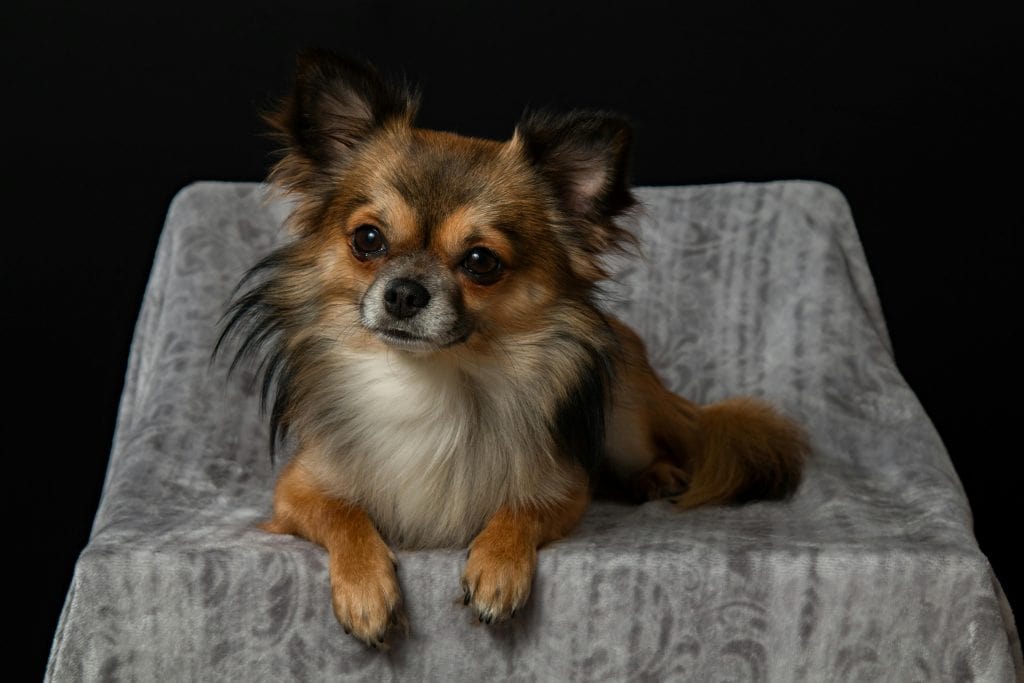
Photo by Pixabay
The journey with Savannah proves every dog’s personality can shine with the right guidance, patience, and the right blend of healthy food and practical dog obedience training at home.
Key Factors to Maximize Success in Online Dog Training for Small Breeds
Helping your small dog excel in online dog training calls for more than just a screen and a few treats. Based on my journey with Savannah, there are a few key factors that make all the difference—from setting routines to choosing the right tools. Let’s break down what boosts results and keeps your small friend motivated, healthy, and happy.
Establishing Consistent Routines and Positive Reinforcement
Dogs thrive on predictability, and small breeds are no exception. Savannah made real progress when I stuck to a steady daily routine. Regular training times help dogs anticipate what’s coming next, lowering stress and boosting focus. Keeping sessions short but frequent keeps energy high.
- Consistency matters: Hold sessions at the same time of day.
- Short and sweet: Limit training to about 5-15 minutes to avoid boredom.
- Repeat cues and commands: Using the same words and gestures builds faster understanding.
Positive reinforcement sits at the core of dog obedience training. Every time Savannah figured out a new command, I gave her praise, a gentle pat, or a tasty treat. Dogs of all breeds respond best when they feel rewarded for effort, not just perfection.
- Use plenty of praise for good behavior—dogs love your voice.
- Small, healthy treats tied to dog food reviews help reinforce progress while supporting nutrition.
- Celebrate little wins: Every step forward deserves recognition.

Photo by Jens Mahnke
Choosing the Best Online Training Programs
Not all online dog training is created equal. The right program can bring out the best in your dog, while a poor fit may leave you both frustrated. Think about your dog’s personality, learning style, and comfort level with technology. Savannah responded better to live, interactive classes than to pre-recorded videos.
Here’s what I look for in a training program:
- Live support: Access to a trainer for questions or adjustments.
- Step-by-step modules: Clear progressions keep small breeds engaged.
- Social components: Group classes or forums offer dogs social experience, especially for breeds like Miniature Schnauzers or Cavaliers.
- Flexible lesson structure: Choose sessions with varying difficulty to keep your dog challenged but not overwhelmed.
A tailored approach works best. Some breeds need extra patience with socialization, while others speed through new cues. Explore course options reviewed by real trainers, like those described in this guide to training small dog breeds at home.
For more breed-specific insights, you might also enjoy learning some Akita dog interesting facts if you’re curious about how other types of dogs approach learning.
Monitoring Progress and Adjusting Techniques
Progress isn’t always linear, especially with small breeds who can surprise you with sudden leaps or setbacks. I found it helpful to keep a journal for Savannah. Tracking sessions, noting which cues stuck, and which techniques needed tweaking gave me a roadmap for adjusting our approach.
To get the best results:
- Log each session: Record what you worked on and how your dog responded.
- Watch for patterns: Celebrate when you see a new skill take hold.
- Adapt quickly: If your dog struggles, try breaking steps into smaller parts or switching up rewards.
Feedback matters too. Progressive online dog training often includes assessments, either self-guided or with help from a trainer. Don’t hesitate to reach out if you feel stuck. Sometimes, a simple tweak—such as rewarding with a different type of treat or changing the order of lessons—can make all the difference.
Sticking with a flexible attitude lets dogs like Savannah shine at their own pace. Over time, you’ll discover what works best, boosting both obedience and your dog’s enjoyment of training.
For more on how to blend nutrition with successful training, visit the puppy-focused nutrition guide for young dogs, which pairs well with solid dog trainig at every stage.
Supporting Socialization and Obedience Beyond the Screen
Landing success with online dog training is just the start, especially for small breeds and pups like Savannah. The real magic happens when those skills transfer from virtual lessons to daily walks, dog parks, and every friendly meet-and-greet in between. The jump from screen to street can feel big, but practical steps and strong routines make it smooth and rewarding. Let’s talk about how you can keep building obedience and social confidence beyond your monitor.
Practical Tips for Socialization After Training
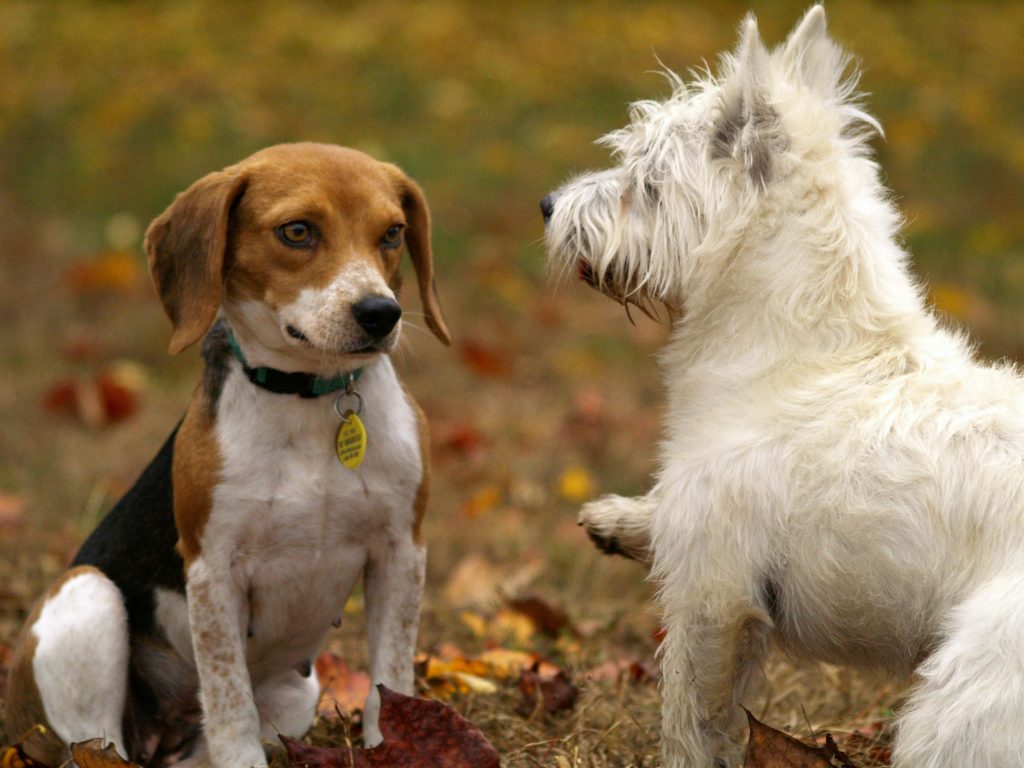
Photo by Hilary Halliwell
Effective socialization goes past theory. Savannah grew braver and more relaxed as we carried online dog training cues into real-life encounters. Consistency in the real world builds the foundation for lifelong manners.
A few actionable ways to apply what you and your dog learn online:
- Practice short outings: Start with low-distraction spots like quiet streets or local parks during off-hours.
- Keep sessions upbeat: Treat every outing as a chance for your dog to earn praise and small healthy treats. Good behavior at the café or during a calm meeting with a neighbor gets rewarded just as during class.
- Introduce new experiences slowly: Add new sounds, scents, and people gradually. One positive exposure at a time avoids overwhelming your dog.
- Use learned commands often: Asking for a “sit,” “watch me,” or “leave it” in real settings helps cement your dog’s focus and self-control.
- Stay patient with setbacks: Even dogs who ace online lessons can get nervous out and about. Celebrate little wins, and keep the spirit light and fun.
Building social skills is as important as obedience in every small breed’s journey. If you want extra perspective on different dog breeds and their personalities during socialization, peek into the breakdown on Boxer dog traits for a useful comparison to your small pup’s own strengths.
Resources for Ongoing Dog Obedience Training
Staying on top of dog obedience training after your initial online program helps set your dog up for long-term success. Savannah thrives when I add new layers to her learning—even after we finish a course.
Some helpful resources and steps include:
- Refresher online classes: Join intermediate or advanced dog trainig courses to build on basics and challenge your dog with new cues.
- Interactive tools and mobile apps: Many apps now support tracking progress, sending reminders for training time, and offering new socialization tasks.
- Local meet-ups and workshops: In-person trainer-led classes or dog-friendly gatherings reinforce social skills while letting you meet others on the same journey.
- Expert blogs and review sites: Quality websites packed with dog food reviews and real-life training stories give practical advice as you work through challenges.
- Trusted books and guides: Look for updated publications focused on small dog breeds and positive obedience techniques.
No matter your route, continuing with regular practice and fresh challenges will keep your dog engaged and obedient. Nutrition’s role can’t be overlooked—feeding your dog the best dog food supports not only health but focus and energy for learning.
Keeping Savannah’s training rewarding and ongoing is part of what makes her such a confident companion at home, online, and everywhere in between.
Nutrition and Care Considerations for Small Dogs in Training
Proper nutrition and thoughtful care are the backbone of success for any small dog enrolled in online dog training. I learned this with Savannah: her attention, energy, and spirit all soared once I dialed in her feeding, treats, and daily routine.
These tiny breeds pack a lot of personality, but they also need the right fuel and support to master new skills. Let’s look at what matters most when setting up your small dog for positive training and lifelong health.
Choosing the Right Dog Food for Focus and Energy
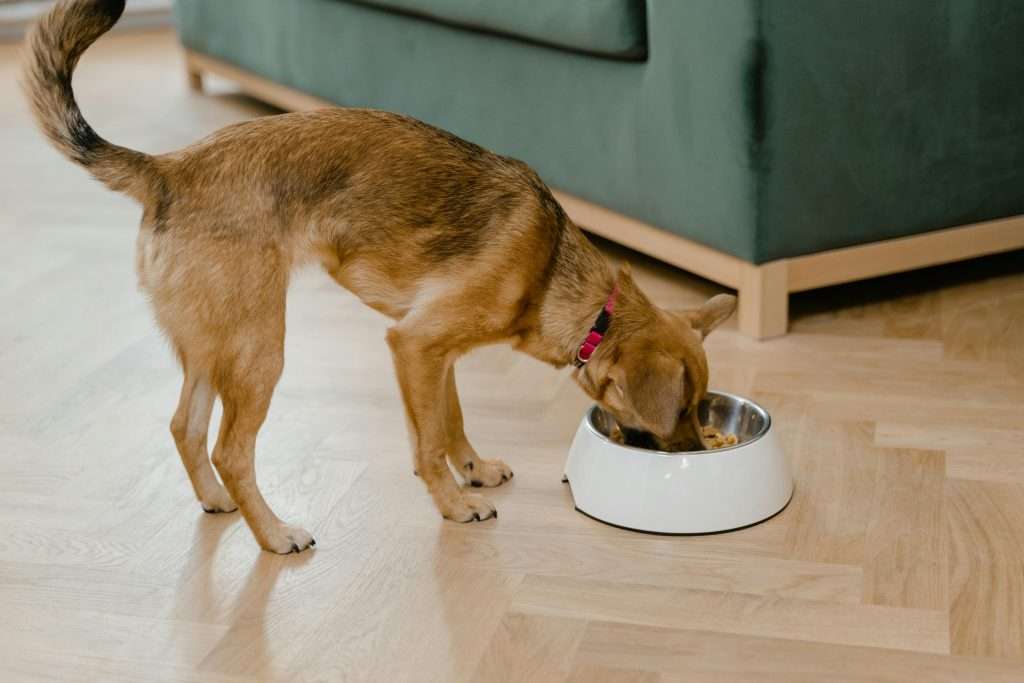
Sign up for free online training now!
A high-quality diet truly makes a difference in how well dogs learn new cues and stay motivated during sessions. Small breeds like Savannah have fast metabolisms, so every bite counts. I always check that her food has:
- Balanced protein for muscle strength and steady energy
- Healthy fats to support mental sharpness and stamina
- Vitamins and antioxidants to keep her immune system strong
During training, small breeds may need extra calories or super-tasty bits as rewards. I like to use part of Savannah’s regular kibble or special small-breed treats to avoid excess calories. If you’re comparing options, trusted dog food reviews help simplify the search for truly nutritious picks.
Wet or dry, the ideal food should be easy to chew and digest. Many small dog foods feature smaller kibble size, which is perfect for tiny jaws and helps avoid choking dangers.
Smart Treats and Rewards During Dog Obedience Training
Using food as motivation can unlock rapid results in dog obedience training, especially for easily distracted pups. Savannah lights up for a special snack, but I’m careful to balance rewards and overall intake.
Here’s how I keep training healthy and effective:
- Choose single-ingredient treats like freeze-dried chicken or salmon for simple, tasty rewards.
- Break treats into tiny pieces so your dog earns many rewards without overfeeding.
- Keep high-value treats handy for tricky tasks or new skills—sometimes, a surprising taste flips the switch on your dog’s focus.
Check ingredient lists and watch for added sugars or fillers. If your dog has allergies, natural snacks are often safer. No matter the breed, always adjust mealtime if training days involve lots of treats so meals remain balanced.
Hydration and Care During Online Dog Training Sessions
Even short sessions can work up a thirst. I always make sure Savannah has access to fresh water before, during, and after dog trainig. Hydration keeps her sharp and helps avoid overheating—especially in the warmer months or during spirited indoor games.
Attentive care outside of lessons also matters:
- Stick to a steady sleep schedule for better concentration during lessons.
- Brush teeth regularly since tiny breeds are prone to dental issues, especially with treat-heavy routines.
- Monitor body condition: Check your dog’s weight and energy often. Sudden changes might mean a food tweak is needed.
Prioritizing these simple care tips will help small dogs stay healthy, alert, and eager to participate in training, both virtually and face-to-face. Keeping things balanced for Savannah turned our training sessions into bonding moments, fueling her progress every step of the way.
For more advice on keeping your pup’s nutrition on track, my go-to resources are honest dog food reviews and real feedback from other small dog owners. Care and food decisions work hand in hand with every online dog training milestone.
Frequently Asked Questions About Small Dog Breeds in Online Dog Training
Dog owners often wonder if small breeds can truly succeed with online dog training and socialization. I had many questions myself before starting training with Savannah. Based on my journey, here are some of the most common questions, clear answers, and advice that can help you and your small pup get the results you want.
Can Small Dog Breeds Learn Effectively With Online Dog Training?
Absolutely. Small breeds thrive in online lessons because the home environment reduces distractions and stress. Savannah, my own dog, picked up new commands quickly with short, focused online sessions.
Many small breeds are naturally alert and eager to please, which helps them pay attention and respond to training cues. Virtual classes also allow for flexible scheduling, making it easy to fit lessons around your day.
What Online Training Methods Work Best for Small Dogs Like Savannah?
I’ve found that combining live virtual sessions with clear step-by-step instructions leads to the best results. Small breeds do well with:
- Short, daily lessons (5-15 minutes)
- Positive feedback like treats and praise
- Repetition of simple, clear commands
- Gentle socialization through virtual group classes
You can build a plan that fits your dog’s personality. For extra support, consider tools and tips found in articles like the best ways to train your small dog at home.
How Do I Support Socialization in an Online-Only Setting?
Virtual group classes are a great way to practice social skills, even if your dog is shy. Savannah was nervous at first, but seeing new faces on screen and practicing greetings helped boost her confidence. You can also:
- Arrange video calls with family and other pet owners
- Play audio of real-world sounds (dogs barking, car noises) during lessons
- Introduce toys and new objects so your dog adapts to change
Moving slowly, offering praise, and bringing variety keeps it positive.
Are Certain Small Dog Breeds Better Suited for Online Training?
Some breeds pick up online routines faster than others. Based on my experience and advice from experts, these breeds often shine:
- Boston Terriers
- Papillons
- Miniature Schnauzers
- Cavalier King Charles Spaniels
These dogs are playful, focused, and people-oriented, which makes virtual learning engaging and effective.
What About Nutrition During Training? What Food Should I Use for Rewards?
Nutrition is key to your dog’s focus and health. I use small pieces of healthy kibble or single-ingredient treats as rewards during training with Savannah. For food choices that match the needs of small, active breeds, consider reputable sources like Best Dog Food for Small Breeds and Best Dog Food for Small Breeds: What to Know. Reading reliable dog food reviews also helps me choose brands that work for Savannah’s everyday meals and training treats.
How Can I Tell if Online Dog Training Is Working for My Dog?
Keep a simple journal noting each training session, what you worked on, and how your dog reacted. Savannah responded best to routines, and I celebrated each little win—like her first successful group class on camera. Signs of progress include:
- Quicker response to commands
- Calm behavior when meeting new people (even through the screen)
- Willingness to try new tasks every session
If setbacks happen, don’t worry. Change up the reward, shorten the lesson, or review a simpler skill.
Is Online Dog Training Enough, or Should I Add In-Person Sessions?
Online training builds the basics. To reinforce social skills and obedience, I also bring Savannah to quiet parks and neighborhood walks where she can put lessons into practice. Mixing online lessons with real-life outings boosts her confidence and manners whole new level.
For a closer look at building on virtual skills with real-world social success, insights from the section on supporting socialization and obedience beyond the screen can help guide your next steps.
If you still have questions, remember every dog learns at a different pace. Keeping training positive for both you and your dog encourages steady progress and a happy tail at the end of every lesson.
Conclusion
Small dog breeds like Savannah thrive in online dog training thanks to their focus, eagerness to please, and ability to learn in familiar settings. Their adaptability means dog obedience training can be both effective and fun at home. Consistency and positive reinforcement stand out as keys to lasting success.
Balancing training with smart nutrition, as highlighted in trusted dog food reviews, helps boost learning and keeps your dog healthy. The right training approach brings out the best in every breed, so think about your pup’s unique personality before choosing a program.
Sticking with regular routines and always supporting socialization—on or off the screen—sets your small dog up for confidence and good manners everywhere. Celebrate progress, keep learning new skills, and remember that every dog’s journey is worth the effort. Thank you for following Savannah’s story; I hope it inspires your own training adventures. Share your experiences or questions—I’m here to support your next steps.




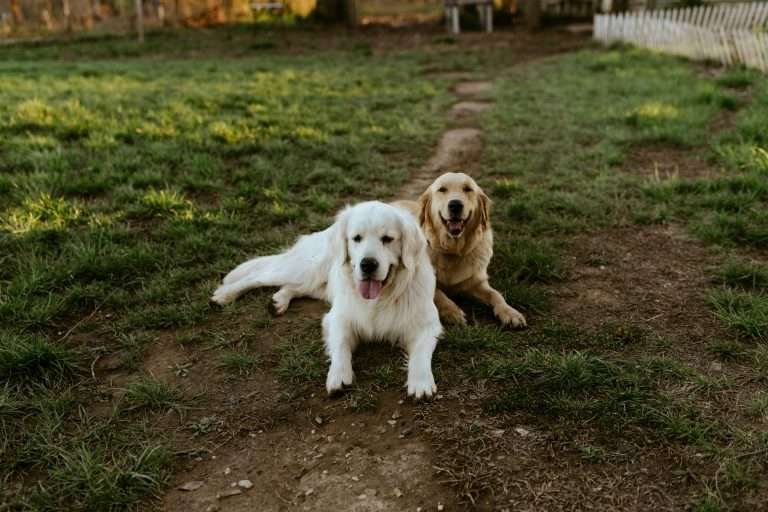

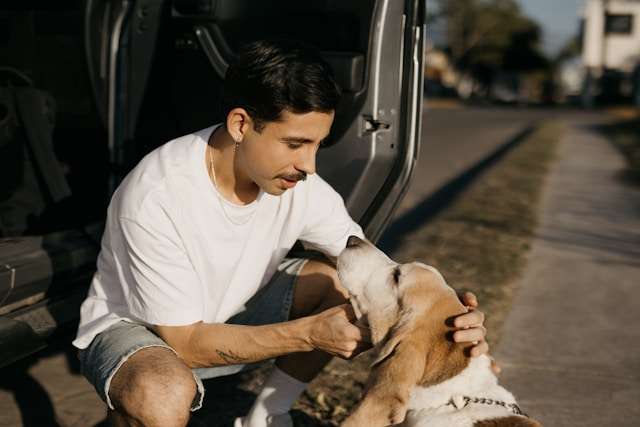



very informative articles or reviews at this time.
Thank you!
I truly appreciate your technique of writing a blog. I added it to my bookmark site list and will
Thank you very much!